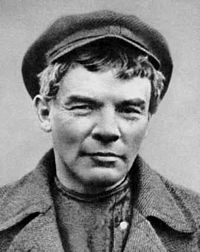The Russian communist revolutionary and politician Vladimir Lenin consolidated his power in the Russian Empire following the Russian Revolution of 1917. Following on from his early life and early revolutionary activity, he was based in Switzerland, having fled the Tsarist authorities.
The Russian Revolution: 1917â€"

In February 1917, revolution broke out in Petrograd as industrial workers went on strike over food shortages and deteriorating factory conditions. The unrest spread to other parts of Russia, and fearing that he would be violently overthrown, Tsar Nicholas II abdicated with the State Duma taking over control of the country, creating a Provisional Government. When Lenin learned of this from his base in Switzerland, he celebrated with other dissidents, and immediately sent advice to the Bolsheviks in Russia. He decided to return to Russia to take charge of the Bolsheviks there, but found that most passages in to the country were blocked due to the ongoing First World War. He organised a plan with other dissidents to negotiate a passage for them through Germany, with whom Russia was then at war. The German government agreed to permit 32 Russian citizens to travel in a train carriage through their territory, among them Lenin and his wife Nadezhda Krupskaya. They then traveled by train from Zurich to Gottmadingen, and then to Sassnitz, followed by a ferry to Trelleborg in Sweden. They took a train to Stockholm, where they were welcomed by the mayor, and then on to Harapanda. From there, they went by sleigh to Torno in Russian-controlled Finland, and then by train to Helsinki, before taking the final train to Petrograd.
References

